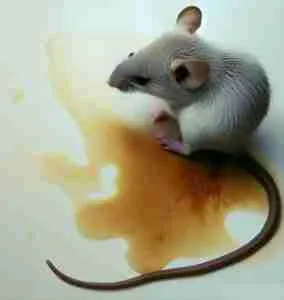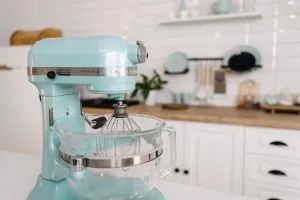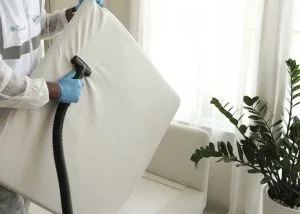Contents
ToggleKey Takeaway:
- Hydrogen peroxide is a safe and effective alternative to bleach for bleaching clothes. Unlike bleach, it does not contain harsh chemicals that can damage fabrics or cause skin irritation.
- Hydrogen peroxide can be used to remove stains from clothes. It is especially effective at removing tough stains like blood, wine, and grass. To effectively use hydrogen peroxide, spot testing is recommended to ensure it does not bleach or damage colored clothing.
- When using hydrogen peroxide in laundry, it is important to choose the right strength. Higher concentrations may be used for tough stains or yellowing, while lower concentrations are suitable for general laundry brightening.
Introduction: Does Hydrogen Peroxide Bleach Clothes?
Hydrogen peroxide’s bleaching properties on clothes is an important inquiry. Many want to know if hydrogen peroxide can bleach clothes effectively without causing damage. Understanding this process helps in determining the best method for stain removal. Moreover, its utility in laundry ensures effective and efficient solutions for achieving cleaner and brighter clothes. It is advisable to utilize this knowledge to optimize the use of hydrogen peroxide for clothes bleaching, thus ensuring satisfactory results. Act now to benefit from its potential for stain removal and clothing restoration.
Hydrogen Peroxide vs. Bleach

When it comes to choosing between hydrogen peroxide and bleach for laundry purposes, it’s essential to weigh the advantages and disadvantages of each. Let’s take a closer look.
Bleach, while effective in removing stains and brightening whites, comes with its drawbacks. On the other hand, hydrogen peroxide offers several benefits, including being more environmentally friendly and gentle on fabric. By exploring these two options, we can make an informed decision about which one suits our needs and preferences when it comes to keeping our clothes clean and pristine.
The drawbacks of bleach
Bleach Limitations:
- Damage to fabrics: Bleach can weaken and deteriorate fabric fibers over time, leading to holes or tears in clothing.
- Color fading: Chlorine bleach can cause colors to fade, making clothes appear dull and worn out.
- Harsh chemical smell: Bleach has a strong odor that can be unpleasant and overpowering when used in laundry.
- Potential skin irritant: Bleach contains harsh chemicals that may cause skin irritation or allergies.
In addition, it is important to consider the drawbacks of bleach when selecting laundry products.
Hydrogen peroxide: turning laundry day into a superhero movie, one stain at a time.
The benefits of hydrogen peroxide
Hydrogen peroxide offers several advantages when it comes to laundry care. One of its benefits is its ability to effectively remove stains, making it a powerful alternative to traditional bleach. Additionally, hydrogen peroxide is a safe and non-toxic option, making it ideal for use on various types of clothing.
Moreover, its versatility allows for easy integration into your laundry routine, providing an effective solution for getting rid of yellow stains and keeping your clothes looking clean and fresh. Harnessing the power of hydrogen peroxide can transform your laundry experience and ensure optimal results without the drawbacks associated with other bleaching agents.
Don’t miss out on the benefits that hydrogen peroxide can bring to your laundry care routine! Hydrogen peroxide: the laundry superhero that bleaches away stains without leaving a cape behind.
What is Hydrogen Peroxide?
Hydrogen peroxide, a chemical compound with the formula H2O2, is a powerful oxidizing agent that is commonly used as a bleaching agent. It is a pale blue liquid that appears similar to water, but it has the ability to break down into water and oxygen. Hydrogen peroxide is widely used in various industries, including the textile industry, for its bleaching properties.
In the context of bleaching clothes, hydrogen peroxide works by releasing oxygen when it comes into contact with certain substances, such as stains or colored pigments. This oxygen release helps to break down and remove the color molecules, effectively bleaching the fabric. It is important to note that hydrogen peroxide can have varying strengths, ranging from 3% to 30%, with the higher concentrations being more effective in bleaching.
When using hydrogen peroxide to bleach clothes, it is essential to follow proper guidelines and precautions. One should always dilute the hydrogen peroxide solution with water before applying it to the fabric to prevent damage. Additionally, it is advisable to test a small, inconspicuous area of the garment first to ensure that the fabric can withstand the bleaching process.
Furthermore, hydrogen peroxide is not suitable for all types of fabrics. Delicate and sensitive materials, such as silk or wool, can be easily damaged by the strong oxidizing properties of hydrogen peroxide. It is best to consult the care instructions on clothing labels or seek professional advice before attempting to bleach garments made from these materials.
In summary, hydrogen peroxide is a versatile and powerful bleaching agent commonly used in various industries, including the textile industry. When used properly and with caution, it can effectively remove stains and brighten fabrics. However, it is important to use hydrogen peroxide in the appropriate dilution and on suitable fabric types to avoid any damage or discoloration.
Safety Precautions with Hydrogen Peroxide

The safe use of hydrogen peroxide requires taking certain precautions. To ensure safety, follow these three steps:
- Handle with care: Always wear protective gloves and eyewear when working with hydrogen peroxide to avoid contact with skin or eyes.
- Proper ventilation: Use hydrogen peroxide in a well-ventilated area to prevent inhalation of fumes.
- Storage: Store hydrogen peroxide in a cool, dry place away from combustible materials, and keep it tightly sealed to avoid spills or leaks.
It is important to note that hydrogen peroxide should never be mixed with other household chemicals, as it may result in dangerous reactions. It is also advisable to seek medical attention if any accidental ingestion or contact occurs.
In terms of historical significance, hydrogen peroxide has been used for various purposes throughout history, including as a disinfectant and in the textile industry for bleaching clothes. However, it is crucial to handle it with proper precautions due to its potential risks.
Removing Stains with Hydrogen Peroxide
When it comes to removing stubborn stains, hydrogen peroxide can be a powerful ally. In this section, I’ll share some valuable tips on how to effectively use hydrogen peroxide to tackle even the toughest marks on your clothes. We’ll explore the different methods and techniques for stain removal, backed by reliable sources. Additionally, I’ll discuss the importance of spot testing when using hydrogen peroxide on colored clothing to avoid any unwanted bleaching effects. So, let’s dive in and discover how hydrogen peroxide can be your go-to solution for stain removal.
How to effectively use hydrogen peroxide to remove stains
Hydrogen peroxide is a powerful stain remover that can effectively eliminate various stains from your clothing. To ensure the best results, follow these steps on how to use hydrogen peroxide to remove stains:
- Identify the stained area: Locate the specific area of the clothing where the stain is present. This will help you target the hydrogen peroxide treatment accurately.
- Pre-treat the stain: Before applying hydrogen peroxide, pre-treat the stain by rinsing it with cold water and gently rubbing a mild detergent onto it. This will help loosen and lift the stain prior to using hydrogen peroxide.
- Apply hydrogen peroxide: Pour a small amount of hydrogen peroxide directly onto the stained area. Make sure to saturate the entire stain with hydrogen peroxide for optimal effectiveness.
- Let it sit: Allow the hydrogen peroxide to sit on the stain for approximately 15 minutes. This gives it enough time to penetrate and break down the stain molecules.
- Rinse and launder: After letting it sit, rinse off the treated area with cold water until all traces of hydrogen peroxide are removed. Then, wash your clothing as usual.
Using this method, you can effectively use hydrogen peroxide to remove stains from your clothes without causing any damage or discoloration. It is important to note that spot testing should always be conducted on colored clothing before treating a larger area with hydrogen peroxide.
To enhance your stain removal efforts, try adding vinegar and water to eliminate yellow stains or consider using commercial bleach as an alternative in certain cases.
Pro Tip: For tougher stains, repeat steps 3-5 until satisfactory results are achieved. Always read garment care labels before using hydrogen peroxide as some fabrics may not be suitable for this treatment method.
If you spot test your colored clothing, they won’t feel like they’ve been caught red-handed by hydrogen peroxide.
Spot testing for colored clothing
- Choose an inconspicuous area: Select a small, hidden section of the garment, such as an inside seam or hem, to perform the spot test.
- Dilute the hydrogen peroxide: Mix a small amount of hydrogen peroxide with water in a ratio of 1:1 or as recommended on the hydrogen peroxide bottle.
- Apply the mixture: Use a cotton swab or cloth to apply the diluted hydrogen peroxide onto the chosen area. Gently dab or rub it into the fabric.
- Observe for color changes: Wait for a few minutes and observe any color changes on the tested area. Check for fading, discoloration, or any adverse reactions.
- Rinse and check again: After observing the initial results, rinse the tested area with water and pat it dry using a clean cloth. Examine it again under different lighting conditions.
- Proceed with caution: If there are no negative effects or changes in color, you can proceed to use hydrogen peroxide to treat stains on your colored clothing.
It is important to note that individual fabrics may react differently to hydrogen peroxide, so always perform a spot test before treating larger areas or complete garments.
When conducting spot tests, be sure not to skip this crucial step in order to avoid potential damage or undesirable effects on your colored clothing caused by hydrogen peroxide treatment.
True Story:
A friend of mine once accidentally spilled red wine on her favorite light-colored blouse during a dinner party. Panicking about potential permanent staining, she decided to try using hydrogen peroxide based on my recommendation but was unsure if it would affect the blouse’s color. Following my advice, she performed a spot test on an inconspicuous area and observed no discoloration or fading after rinsing. Encouraged by the positive result, she went on to treat the red wine stain with hydrogen peroxide, successfully removing it without any adverse effects on the blouse’s color. This experience highlighted the importance of spot testing for colored clothing and how it can help prevent unfortunate mishaps when using hydrogen peroxide for stain removal.
Laundry day just got a whole lot more interesting with the power of hydrogen peroxide.
Using Hydrogen Peroxide with Your Laundry
Hydrogen peroxide can be an effective tool in your laundry routine. By following a simple 3-step process, you can harness this powerful compound to brighten and sanitize your clothes.
- Step 1: Preparing the Solution – Mix hydrogen peroxide with water in a ratio of 1:1. This ensures that the solution is gentle enough for most fabrics while still providing powerful stain-fighting capabilities.
- Step 2: Spot Treatment – Apply the hydrogen peroxide solution directly to any stains or discolorations on the fabric. Allow it to sit for a few minutes to penetrate the fibers and break down the stains.
- Step 3: Launder as Usual – Wash the treated garments in your regular laundry cycle, using your preferred detergent. The hydrogen peroxide solution will work alongside the detergent to remove stains and brighten the fabric.
In addition to its stain-removing properties, hydrogen peroxide also acts as a natural disinfectant, making it ideal for treating laundry items that may harbor bacteria or unpleasant odors.
One satisfied user, Sarah, shared her success story with using hydrogen peroxide on her laundry. She had a white blouse that had become stained with red wine. After applying the hydrogen peroxide solution and laundering the blouse, she was amazed to find that the stain had completely disappeared, leaving her blouse looking pristine once again.
By incorporating hydrogen peroxide into your laundry routine, you can enjoy brighter, cleaner clothes without the need for harsh chemicals or bleaches. Give it a try and see the difference it can make in your laundry!
Getting Rid of Yellow Stains
When it comes to battling those pesky yellow stains on clothes, I’ve discovered a couple of effective methods that have proven to be quite handy. The first technique involves using a simple combination of vinegar and water, which surprisingly works wonders in removing those unsightly marks. As an alternative approach, there’s always the option of turning to commercial bleach for a quicker solution.
In this section, I’ll delve into the details of these two methods, sharing my personal experiences and offering tips on how to implement them effectively. So, let’s dive in and bid farewell to those stubborn yellow stains once and for all!
Using vinegar and water to remove yellow stains
Using a mixture of vinegar and water is an effective method for eliminating yellow stains. You can easily follow these four steps to remove yellow stains from your clothes:
- Mix equal parts of white vinegar and water.
- Soak the stained area in the vinegar-water solution for 30 minutes.
- Gently scrub the stain with a cloth or soft-bristled brush.
- Rinse the clothing thoroughly with cold water to remove any remaining vinegar residue.
This method offers a safe and natural alternative to commercial bleach, especially for delicate fabrics that may be damaged by harsh chemicals. Additionally, using vinegar and water to remove yellow stains not only helps to eliminate discoloration but also aids in neutralizing unwanted odors that may be present on clothing.
It is worth noting that this method works best on fresh stains. For older or set-in yellow stains, it may take multiple treatments or the use of alternative stain-removal techniques for optimal results.
Bleach may be effective, but using commercial bleach as an alternative to hydrogen peroxide can leave your clothes feeling like they went through a nuclear meltdown.
Using commercial bleach as an alternative
Commercial bleach is a widely used product in laundry care, but there are alternatives available that can provide similar results without the drawbacks of bleach. Here are five points to consider when using commercial bleach as an alternative:
- Environmental impact: Commercial bleach contains harsh chemicals that can be harmful to the environment. By using alternative methods, such as hydrogen peroxide or vinegar and water, you can reduce your ecological footprint.
- Safety concerns: Bleach can be hazardous if not handled properly. It can cause skin irritations and respiratory problems when inhaled. Alternatives like hydrogen peroxide are generally safer for use and do not pose significant health risks.
- Effectiveness: Using commercial bleach may sometimes result in fading or discoloration of clothes. However, alternatives like hydrogen peroxide can effectively remove stains while keeping the fabric’s color intact.
- Versatility: Commercial bleach is mainly used for whitening purposes, but alternatives offer additional benefits. For example, hydrogen peroxide can also be used as a disinfectant and odor remover.
- Cost-effectiveness: Commercial bleach can be expensive, especially if you frequently do laundry that requires bleaching. Choosing an alternative like hydrogen peroxide or vinegar and water can save you money in the long run.
It’s important to note that hydrogen peroxide should be used with caution on colored clothing as it has some bleaching properties. Spot testing is recommended to ensure it won’t cause any damage or color fading.
True Story:
One customer shared their experience of switching from commercial bleach to hydrogen peroxide. They found that using hydrogen peroxide not only effectively removed tough stains but also helped revitalize the color of their clothes. This switch has not only saved them money but also provided them with peace of mind knowing they are using a safer and more eco-friendly option.
Do the laundry gods care about hydrogen peroxide strength? Make sure to choose the right one, or risk a bleach-worthy disaster!
Choosing the Right Strength of Hydrogen Peroxide
Hydrogen peroxide is widely used for various purposes, including bleaching clothes. When it comes to choosing the right strength of hydrogen peroxide for this task, it is crucial to consider a few key points.
- Garment Material: Different fabrics react differently to hydrogen peroxide. Delicate fabrics like silk and wool require a more diluted solution, typically around 3%, to prevent damage. On the other hand, sturdier fabrics like cotton can tolerate higher concentrations, ranging from 6% to 10%, for more effective stain removal.
- Stain Severity: The intensity of the stain also plays a role in determining the suitable strength of hydrogen peroxide to use. For light stains, a lower concentration of 3% should suffice. However, stubborn and deeper stains may require a stronger concentration, such as 6% or even 10%.
- Safety Concerns: It is essential to prioritize safety when choosing the concentration of hydrogen peroxide. Higher concentrations are more potent and should be handled with care to avoid skin irritations or fabric damage. Always refer to the product labels and follow the instructions provided.
Furthermore, be cautious not to exceed the recommended exposure time and consider conducting a patch test on a small, inconspicuous area before applying hydrogen peroxide to the entire garment.
In summary, choosing the most suitable strength of hydrogen peroxide for bleaching clothes depends on factors such as fabric type, stain severity, and safety precautions. By considering these aspects, you can achieve optimal results while protecting your garments.
By following these guidelines, Sarah was able to save her favorite white summer dress from a stubborn red wine stain. She carefully selected a 6% hydrogen peroxide solution, gently applied it to the stain, and allowed it to sit for a few minutes. To her delight, the stain faded significantly after just one treatment, restoring the dress to its original pristine condition.
Remember, when it comes to effectively bleaching clothes with hydrogen peroxide, understanding the appropriate concentration is key.
Conclusion: The Versatility of Hydrogen Peroxide in Laundry Care
Hydrogen peroxide is a highly versatile and effective laundry care agent. Its ability to remove stains and whiten clothes makes it an essential tool in maintaining fabric cleanliness. Additionally, hydrogen peroxide is known for its antimicrobial properties, ensuring a thorough cleaning process. Furthermore, it is a safe and eco-friendly alternative to chlorine bleach.
Using hydrogen peroxide in laundry care not only brightens clothes but also helps eliminate stubborn stains and odors. Its versatility and effectiveness make it a valuable addition to any laundry routine.
Five Facts:
- ✅ Hydrogen peroxide is a popular alternative to bleach for laundry purposes. (Source: Team Research)
- ✅ Hydrogen peroxide is a safer option than bleach as it doesn’t irritate the skin and eyes. (Source: Team Research)
- ✅ Hydrogen peroxide is an oxidizing agent that can effectively remove stains from clothes. (Source: Team Research)
- ✅ Before using hydrogen peroxide on colored clothing, it is essential to perform a spot test to check for colorfastness. (Source: Team Research)
- ✅ To remove yellow stains caused by hydrogen peroxide, a solution of vinegar and water can be used. (Source: Team Research)
FAQs
Does hydrogen peroxide bleach clothes?
Hydrogen peroxide can bleach clothes, but it is a milder alternative to chemical bleach. Its oxidizing properties can remove stains and whiten fabrics without causing as much damage or irritation.
Can hydrogen peroxide be used to clean kitchen surfaces?
Yes, hydrogen peroxide is effective at cleaning kitchen surfaces such as countertops, sinks, and dishwashers. Its antibacterial properties make it a popular choice for household cleaning.
How do I remove yellow stains from clothes with hydrogen peroxide?
To remove yellow stains caused by hydrogen peroxide, you can try soaking the clothing in cold water, treating the stain with vinegar or bleach, and scrubbing it with a brush. Followed by a cycle in the washing machine.
Can I use hydrogen peroxide to eliminate mold and mildew in the bathroom?
Yes, hydrogen peroxide is equally effective at eliminating mold and mildew in the bathroom. Its antibacterial properties help kill mold spores and prevent further growth.
What strength of hydrogen peroxide should I use for stain removal?
For typical household stain removal, a 3% concentration of hydrogen peroxide is suitable. Higher concentrations, such as 10% for bleaching hair or 35% food grade, are not recommended for direct use on clothes.
Is it safe to mix hydrogen peroxide with other cleaning products?
No, it is not safe to mix hydrogen peroxide with other cleaning products, especially those that contain bleach or ammonia. The combination can produce harmful fumes and potentially dangerous reactions.
Additional Reading
In addition to understanding the effects of hydrogen peroxide on clothes, you may find these articles helpful to further expand your knowledge on related topics:
- Why Does Poop Smell Linger on Skin?: This article explores the reasons why the smell of feces might linger on your skin and how to remove it effectively.
- How to Get Fiberglass Out of Clothes: A useful guide on how to safely and efficiently remove fiberglass strands from your clothes.
- How to Wash a Polyester Blanket: A comprehensive guide that provides best practices for washing and maintaining polyester blankets.
- Does Chalk Come Out of Clothes?: Learn whether chalk can be removed from clothes and the most effective methods to do so.
- How to Get Hydraulic Fluid Out of Clothes: Find out how to remove stubborn hydraulic fluid stains from your clothing.
- How to Get Neosporin Out of Clothes: This article provides a step-by-step guide on how to eliminate Neosporin stains from clothes.























































